Philip Ball traces how chemists and artists have been inspiring each other for centuries
In ancient Mesopotamia, a craftsman making the blue-glazed ornaments now called faience by coating soapstone with a ground-up copper mineral finds in his kiln an unexpected lump of glittering blue material – the chance product of a reaction with stray sand and lumps of chalk. It turns out to be a marvellous pigment for papyrus paintings, and will become known for its widespread use by the Egyptians.
In Berlin at the start of the 18th century, an alchemist making red lake pigment is given a batch of contaminated potash and finds that he has produced a rich dark blue, which is sold within a few years as Prussian blue.
In the mid-19th century, a worker at the Passaic Chemical Company in New Jersey notices a leaky fire flue in one of the furnaces, and plugs the gap with some zinc ore and coal lying about from the company next door. He sees white fumes of zinc oxide rising from the pile, and thereby discovers a direct way to make the pigment zinc white from the unrefined metal ore.
Throughout history, such accidents in chemical technology have produced new colouring materials for artists. Some pigments, it’s true, came from concerted efforts to make them – but given the limited understanding of chemical principles, and especially any real notion of how composition relates to colour, the discovery of new pigments has mostly been a haphazard affair.
This means that the artist’s palette has always relied on practical chemical craft: the ability of artisans to transform materials. It also implies that the invention of colour has been driven by the broader social demand for new substances such as glass, soap, metals, drugs and plastics. What’s more, these new colours haven’t simply made art easier, cheaper or more colourful. Rather, the chemistry of colour has sometimes brought about profound changes in the style, meaning and culture of art.1
Wonderful vermilion
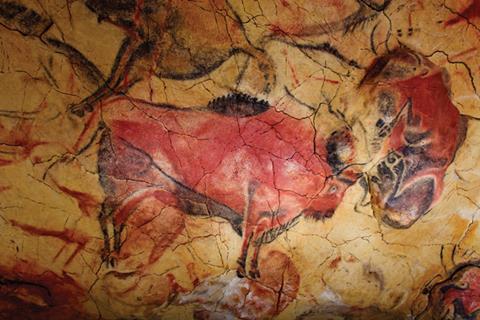
This exchange has been two-way. Art has benefitted immensely from chemistry, but many advances in chemical technology – including the birth of the entire modern chemicals industry – have in turn depended on the social demand for colour. Here is an interaction between art and science that doesn’t (as is the current fashion) hinge just on a mutual exchange of ideas. It has determined to some degree what is actually possible: what art can do and what science can do, according to the practical resources each has at its disposal.
Arguably some of the earliest chemistry we know about was done for art’s sake. Palaeolithic painters used fire to alter the appearance of some of the mineral pigments that they bound with animal fats and used to make stunning images like those at the caves of Altamira and Lascaux. For the ancient Egyptians, pigment manufacture was a sophisticated craft: besides the Egyptian blue (calcium copper silicate) mentioned above, they could make a yellow rather like the later Naples yellow from lead and antimony oxides, and they used vinegar fumes to corrode lead and copper into white (lead white 2PbCO3·Pb(OH)2) and green (verdigris; copper(II) acetate) pigments. In the Middle Ages, painters were still going to the alchemists for their colours – albeit with some caution. ‘Always buy vermilion unbroken, and not pounded or ground,’ advised the Florentine craftsman Cennino Cennini in his handbook of the early 15th century. ‘The reason? Because it is generally adulterated, either with red lead or with pounded brick.’
The wonderful red colour vermilion offers a revealing glimpse of this intersection between art and early chemistry (listen to our vermilion podcast). It is mercury sulfide, which was used in its mineral form as a pigment at least since Roman times. Making the compound artificially from its elements gave a richer colour, and this process might have been discovered by the alchemists of ancient China.
The first mention of it in the West appears in an eighth-century manuscript, but the best account is that offered by the Benedictine monk who wrote under the name Theophilus, generally identified as the German Roger of Helmarshausen, in his handbook on the arts from around 1122. It is as close as you will get to an early medieval description of a laboratory synthesis. Seal the sulfur and mercury in a pot, Theophilus writes, and bury it in hot coals. You will hear a crashing noise, ‘as the mercury unites with the blazing sulfur’. Take out the dark solid and grind it, and you have your wondrous red.
Notice that while Cennino later goes to the apothecary, Theophilus is telling the artists how to do it for themselves. For him, painting is a messy and very practical business: you need kilns for this kind of thing and for making alkali from wood ash, and you even need to build those yourself. In his day, and to some extent in Cennino’s too, artists weren’t the cultured, celebrated geniuses cosseted and commissioned by princes and kings, but were anonymous craftspeople not unlike masons and carpenters, and sharing some of the same skills. There’s little in Theophilus’s book about style and composition – it’s more like a DIY manual. This meant that artists needed to be to some extent chemists themselves. They made their own materials, and understood them as well as anyone in their time could have done.
The red king
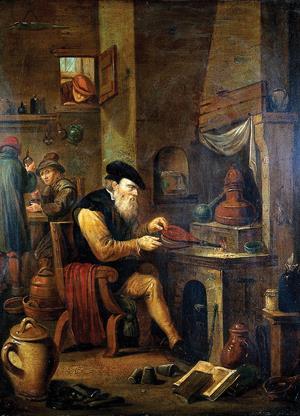
There’s some curious chemistry in Theophilus’s recipe for vermilion: it specifies far more sulfur than a stoichiometric reaction should require. The excess, unreacted sulfur would surely have been noticed in the vessel, so why this error? Spike Bucklow of the Hamilton Kerr Institute at the Fitzwilliam Museum in Cambridge, UK, suggests that it betrays the origins of the recipe in alchemical attempts to make gold.2 How to combine sulfur and mercury to make a red substance is explained in the books attributed to the eighth-century Arabic alchemist Jabir ibn Hayyan, who spread the notion that all metals are made of two elementary ‘principles’: sulfur and mercury.
In Jabir’s view, all you need do to convert base metals to gold was to adjust these two principles to bring them into perfect balance. These alchemical principles weren’t exactly the same as the tangible yellow sulfur and liquid mercury, but the fact that these two could be united to make a beautiful red would probably have been regarded as a stage towards the ‘red king’ or philosopher’s stone that transformed other metals to gold. According to the weights of the elements ascribed by Aristotle, a two-to-one mix of mercury to sulfur should give the perfect balance – even though their stoichiometric reaction needs instead a six-to-one ratio by weight. ‘The crossover between alchemical literature and painting manuals would have been via their common interest in medical and apothecary materials,’ says Bucklow. ‘Those who wrote recipes like this probably understood the alchemical principles they embodied.’
The synthesis of vermilion electrified medieval art, according to the art historian Daniel Thompson in 1936.3 ‘No other scientific invention has had so great and lasting effect upon painting practice as the invention of this colour. If the Middle Ages had not had this brilliant red … there would have been less use for the inventions of other brilliant colours which came on the scene in and after the twelfth century.’
Artists in the Renaissance didn’t lose touch with the materials of their profession. They ran workshops full of apprentices, who often painted mundane elements of a picture under the master’s guidance and whose job it was to grind up pigments and mix them with the fluid binder. It was demanding work, and Cennino gives a hint of the labours they might be expected to perform. With vermilion, he says, ‘If you grind it every day for twenty years, the colour would still become finer and more handsome.’
Some painters had an even greater familiarity with the chemistry of their materials. The German Lucas Cranach the Elder, who painted some of the most compelling portraits of his friend Martin Luther in the sixteenth century, also ran an apothecary, and his familiarity with chemical manipulations may help to explain why he was almost the only Northern European artist of his time to use the exotic (not to mention highly toxic) yellow pigment orpiment, which is arsenic sulfide.
Cadmium yellow (and orange and red)
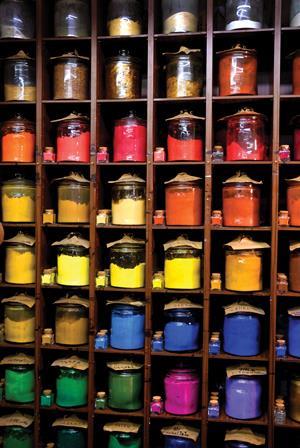
This link between chemistry and art didn’t last. Increasingly, they became distinct disciplines, and painters took Cennino’s advice to get their colours ready-made. By the eighteenth century, chemistry was a distinct academic discipline, now largely purged of alchemy’s mysticism. Artists too were professionalized in guilds and academies, and painting had come to be regarded as a refined and noble pursuit, far removed from the grubby business of handling chemicals.
This didn’t mean the link was entirely severed, however. On the contrary, from the end of the eighteenth century, when Antoine Lavoisier reformulated chemical theory into a recognizably modern form, chemists began to supply artists with a rainbow brighter than they had ever dreamed.
Making colour was still acknowledged as an important part of the chemist’s craft. ‘Does the dyer want the means of tinging a cloth of a particular colour?’ asked the Scottish chemist William Cullen in 1766. ‘It is the chemical philosopher who must supply [this].’ As Cullen implies, a big driver of colour discovery in his day was the textile industry, the single most lucrative sector of the Industrial Revolution. There was huge public clamour for brightly dyed and printed fabrics, and a good dye could make fortunes. But pigments were much sought after too. The French government was the first to recognize the importance of pigments for national industry and economic power, and it commissioned some of its leading chemists to find new materials.
Lead white was still the artist’s finest white, but it was now known to be poisonous. Once it was produced on an industrial scale, factory workers often fell sick with ‘great pains in the Brows, Blindness, Stupidity, and Paralytic Affections’. Lavoisier’s colleague Bernard Guyton de Morveau was commissioned to search for a safer white pigment, and in 1782 he recommended zinc white: zinc oxide, a laboratory synthesis of which had been discovered in Dijon the previous year. It wasn’t until the 1840s, however, that problems with zinc white’s cost, opacity and drying time were sufficiently overcome to allow large-scale manufacture, also in France. The serendipitous American discovery above improved the process still further.
Zinc smelting became a major industrial process in the early nineteenth century, and it spawned another series of important pigments. In 1817, Friedrich Stromeyer investigated a yellow by-product of smelting and found that it contained a new chemical element: cadmium. He soon discovered that synthetic cadmium sulfide offered gorgeous yellows and oranges: the cadmium colours were born. Cadmium red, which contains some selenium, was a later invention, but one that many artists still consider to be unsurpassed for a red paint. The possibility that cadmium red might be removed from the market because of its toxicity continues to provoke anxiety that there will be nothing comparable to replace it.
Synthetic blues
Other colours flooded the market in the nineteenth century. Lavoisier’s rival in the discovery of oxygen, the Swedish pharmacist Carl Wilhelm Scheele, discovered a bright arsenic-based green in 1775 (copper(II) hydrogen arsenite); the related arsenic pigment emerald green (copper(II) acetoarsenite), found in 1814, became even more popular. Nicolas Louis Vauquelin introduced the chromium colours – yellow (lead(II) chromate), orange (lead(II) chromate and lead(II) oxide), green (viridian; chromium(III) oxide dihydrate) – after discovering chromium itself in a mineral from Siberia. Louis-Jacques Thénard’s government-sponsored efforts to find a substitute for expensive ultramarine blue in 1802 led to the synthetic cobalt pigments: blue (cobalt(II) oxide and alumina), purple (cobalt(II) phosphate; the first pure, permanent purple artists ever had) and yellow (aureolin: K3 [Co(NO2)6]).
And perhaps the most celebrated of the nineteenth-century chemists’ innovations in colour was the synthesis of artificial ultramarine itself. It is a complex substance: basically a sodium aluminosilicate with some oxide ions replaced with polysulfide ions, although it may also contain calcium, chloride and sulfate. In 1828, the colour manufacturer Jean-Baptiste Guimet in Toulouse claimed a 6,000-franc prize from the French Society for the Encouragement of National Industry for the first practical synthesis of ultramarine, heating china clay, charcoal, quartz and sulfur in a kiln. Determined to retain a commercial advantage, Guimet never published his method, and several other chemists devised their own methods soon after him. ‘In order to succeed, these men had to be applied scientists well versed in analytical and experimental chemistry,’ says science historian Joost Mertens of the University of Maastricht in the Netherlands.4
You might imagine that artists would have rejoiced in this profusion of new bright colours. But they knew all too well that colours could fade or discolour over time. Could the new pigments be trusted? They had no idea, because they no longer knew anything about chemistry. These paints were coming out of labs and factories, after the 1840s ready-mixed with oils in collapsible tin tubes or in gum-bound watercolour cakes – but who knew what was in them? That’s why the nineteenth century saw the rise of a new kind of professional: the colourman, who bridged the gap between paint manufacturers and artists. These people knew something about chemistry, but also understood what artists wanted, and they could test the new colours to see if they were reliable. In England, the foremost colourman was George Field, who supplied materials to J M W Turner and the pre-Raphaelites. By risking the new pigments, these painters replaced the dour palettes of academic painters such as Joshua Reynolds and Thomas Lawrence with strong, almost overwhelming colours that had never before been seen on the canvas.
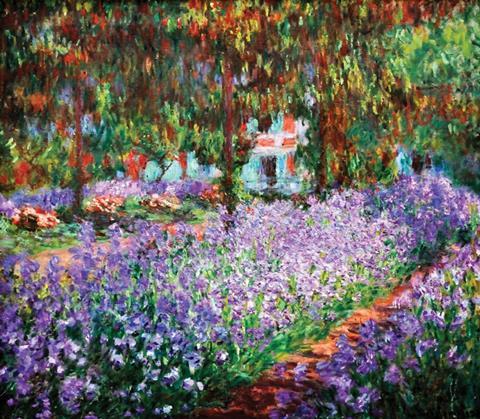
But even their prismatic experimentation was surpassed by what was afoot in France in the 1860s, where Claude Monet, Auguste Renoir, Edgar Degas and their circle created a kind of painting that revolutionised art and scandalised traditionalists. The shock of Impressionism wasn’t just about the way these artists abandoned the smooth finish and sharp outlines favoured by the French Academy of Fine Arts, but about the bold juxtapositions of the new bright pigments. It was as if the Impressionists were trying to reconstruct the world from its rainbow spectral components: they applied chromium, cobalt and cadmium colours unmixed, in complementary hues side by side to enhance each other’s brilliance. For Monet, shadows were purple, snow was blue and pink: black and white were all but banished.
Once others saw this new style, art never looked back. Henri Matisse ramped up the colour intensity even further as the figurehead of the Fauves. Vincent van Gogh used strident colours to signify his internal passion and anguish. Seeing one of Monet’s multi-hued haystacks turned on its side, Wassily Kandinsky was inspired to abandon figurative painting altogether and make colour the very subject of his work. Out of abstraction came the intense colour fields of Mark Rothko, the hard-edged colour blocks of Frank Stella, the ultramarine monochromes of Yves Klein, the vertiginous swirls and tilings of Bridget Riley.
But where did that leave chemistry? On the shelf, perhaps: among all those racks of paints in the art shop are many pigments of the twentieth century, such as quinacridones, phthalocyanines and arylides. Often they masquerade as older, obsolete pigments, pretending to be Naples yellow, Mars red or Vandyke brown. That is presumably to reassure the artists, who can no longer be expected to have any idea what they really contain. But must painting really be so divorced from chemistry? Or might colour one day broker a reunion?
Philip Ball is a science writer based in London, UK
Read more from our chemistry and art theme issue.
References
1 P Ball, Bright earth, Viking, 2008
2 S Bucklow, The alchemy of paint, Marion Boyars, 2009
3 D V Thompson, The materials and techniques of medieval painting, Dover, 1956
4 J Mertens, Ambix, 2004, 51, 219 (DOI: 10.1179/amb.2004.51.3.219)
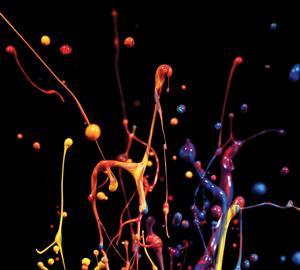












No comments yet